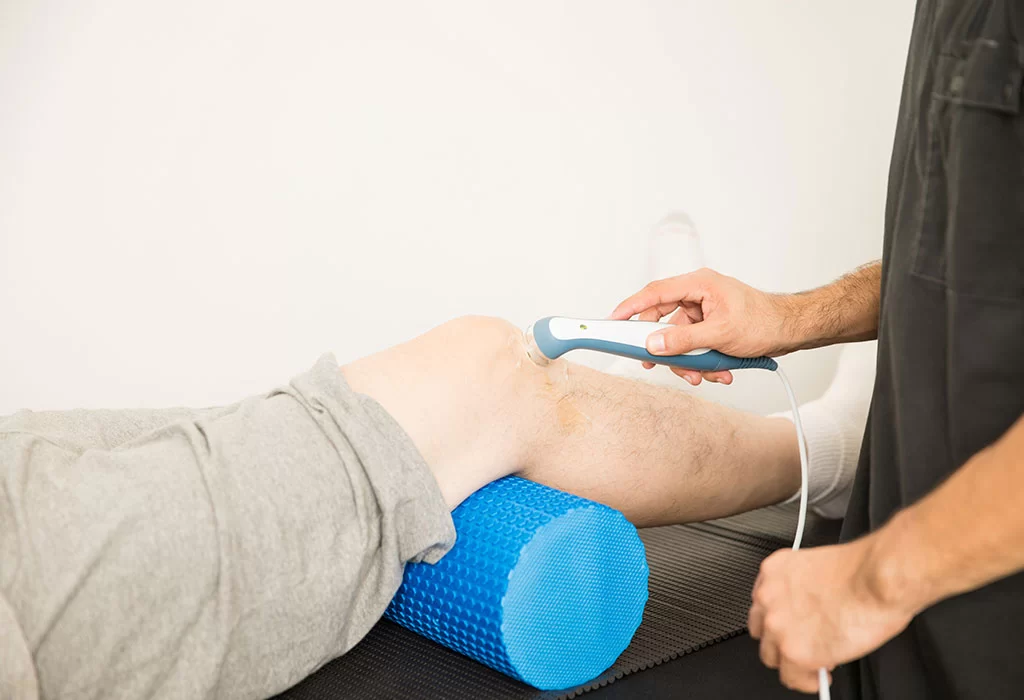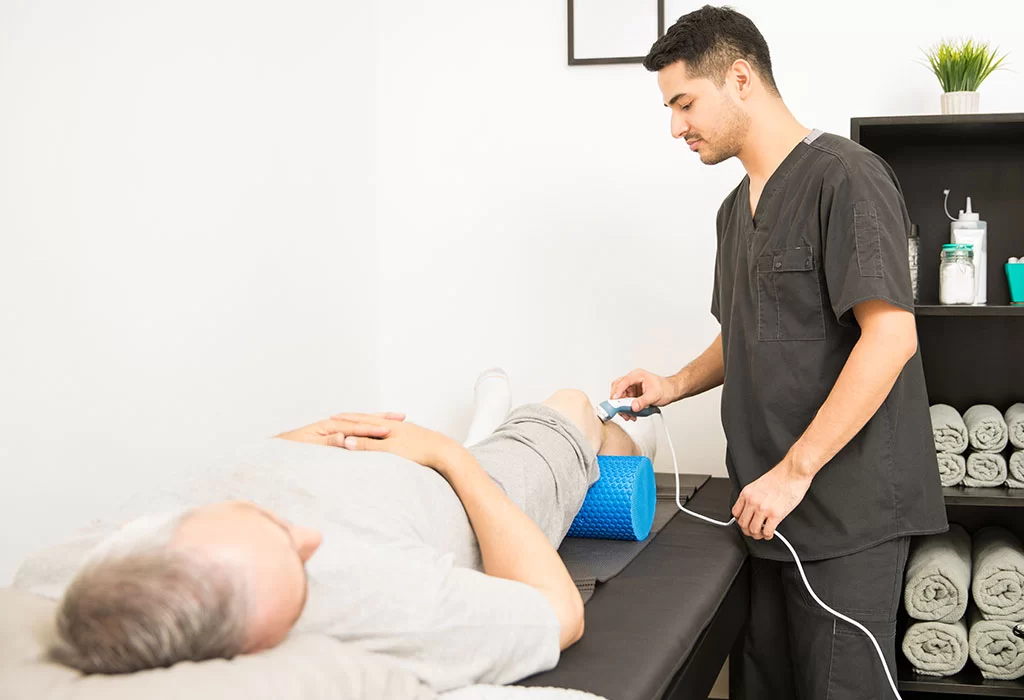Table of Contents
1. What is Ultrasound Therapy/Therapeutic Ultrasound/Focused Ultrasound?
It is a Treatment which involves the use of Ultrasound waves (above the range of human hearing) to effectively treat injuries, spasms, various chronic pain conditions (e.g. pain in the neck, back, nerves, cancerous/non-cancerous tumors), swelling of ligaments, joints, muscles, etc. Ultrasound Therapy boosts blood as well as lymph circulation (which leads to reduced swelling & inflammation), enables tissue healing, as well as enhances healing of bone fractures.
2. What are the different types of Ultrasound Therapy?
The therapy is categorized into 2 types:
- Ultrasound can be used to selectively cause mild vibrations in particular deeper tissues (skin & muscles) and raise their temperature without affecting other tissues. This increases the metabolism of the damaged soft tissue cells, resulting in their healing.
- This therapy can be used to treat Myofascial pain, musculoskeletal issues, muscle strain or sprain, scars, adhesion, etc.
- Mechanical vibration of sound waves penetrate soft tissues and promote their healing via the cavitation process. Cavitation is formation of tiny gas bubbles within tissues and body fluids, and it is of 2 types. Stable Cavitation is the Expansion and contraction of the tiny bubbles that surround the injured area, which reduces inflammation, swelling and hence relieves pain. Unstable/Transient Cavitation is the formation of bubbles at low pressure, which burst very quickly and release a large amount of energy.
- The therapy proved to be effective in treating fibrosis, Carpal Tunnel Syndrome, pain due to kidney stones, etc.
3. What are the Treatment Parameters of Ultrasound Therapy machine that influence the outcome of Ultrasound Therapy?
- Mode: The device produces continuous mode ultrasound (energy remains constant, 100%) or pulsed mode ultrasound (energy is interrupted periodically; not produced while ‘off’).
- Frequency: The frequency ranges typically from 0.75 to 3.0 MHZ.
- Frequency of 1 MHZ: Best for use in patients with higher percentage of body fat, for the sound waves to reach deeper tissues & muscles or larger joints (waves at 1 MH frequency range are transmitted through superficial tissues & absorbed in deeper tissues).
- Frequency of 3 MHZ: Recommended for treating superficial conditions (absorbed & heats the tissues 3 times faster than 1 MH), e.g. muscles near the body surface, hand/foot joints, finger/toe joints, carpal tunnel syndrome, etc.

- We can clearly see that the frequency of ultrasound determines the rate of tissue heating & the depth of tissue penetration.
- Intensity: It is the rate at which energy is delivered per unit area (units: watt). The average intensity over the area of the soundhead is Spatial average intensity (units: Watt/cm2) which is used when pulsed mode is chosen.
- With an increase in intensity, the treatment time is decreased and vice-versa.
- Treatment Duration: Based on the size of area to be treated, frequency & intensity of ultrasound, as well as the desired increase in temperature, treatment length is determined.
- Treatment Area: To avoid broad distribution of energy and reach the therapeutic temperature, make sure that the area to be treated is 2–3 times the size of the soundhead.
- Soundhead Motion: The metallic probe/soundhead is usually moved to make small, overlapping circles of around 3 cm/s to avoid excess exposure & rise in temperature.
4. How does Therapeutic Ultrasound Machine Work?
The Ultrasound therapy machine consists of a high-frequency generator, connected to a treatment head by a coaxial cable to produce ultrasound waves. The first step is to apply gel either on the soundhead or on the skin, to allow for even penetration of sound waves on the skin. The probe is then continuously moved, making small overlapping circles (to avoid excess exposure and temperature rise), over the selected area for about 5 to 10 min. The intensity of Ultrasound is gradually increased/decreased for the desired effect. As the wave passes through the tissues, the energy is gradually transferred to the tissues from the wave. Patients may feel a mild pulsing or a slight warmth in the area being treated.
5. What are the different types of Ultrasound Therapy?
Ultrasound Therapy is an extremely beneficial Very low-risk, non-invasive procedure which effectively

- Increases blood as well as lymph circulation
- Helps in softening of adhesions, scar tissues etc.
- Alleviates pain (ranging from mild injury, sprain, spasm etc. to chronic pain/ related to nerves/ cancer etc.)
- Speeds up healing of muscles, tissues, ligaments, as well as joints
- Promotes bone fracture healing
- Enhances the quality of repair
6. What are the Do’s & Don’ts with Therapeutic Ultrasound?
- The treatment should only be administered by your physiotherapist (unless you have the consent of your doctor)
- Turn on the device only when the soundhead is properly in contact with the patient
- Always use coupling media (e.g. gel) between the applicator surface and the patient to avoid burning of the skin and/or damage to the device
- The soundhead should be moved in circles slowly & continuously, to avoid excess exposure
- The intensity must be reduced immediately in case the patient feels any pain or discomfort, as it indicates overheating of bones or nerve endings.
- Ensure the treatment head/transducer is switched off when not in contact with a transmission medium, to avoid damage to the crystal. (Latest devices come with the facility of “auto cut-off”, which is triggered when the transducer and skin are in improper contact.)
Avoid Ultrasound Therapy
- without prescription from your physiotherapist/doctor
- around the eyes, breasts, or genitals
- over the brain or spinal cord
- over the abdomen, pelvic regions, or lower back in the case of menstruating/pregnant women
- in the case of people with cardiovascular issues
- over the numb/damaged skin & recently radiated areas
- in case of acute sepsis conditions
- over/near the areas with malignant tumors
- over the areas with plastic/metal implants, pacemakers, etc.




